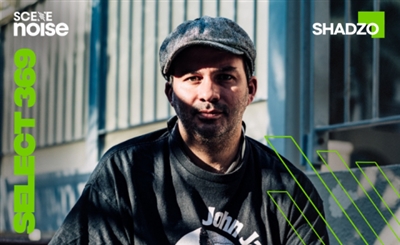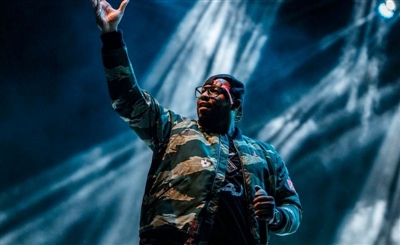Trap Meets Shaabi: Is It Overused?
Trap-shaabi has defined the Egyptian music scene for a little over half a decade - has it already reached its peak?

A guaranteed recipe for success is something that does not exist in music. If we pay attention to historical patterns, virtually every sound that dominates a specific era reaches a peak, and eventually takes a slow curve towards its demise. One could argue that Egyptian hip-hop reached this artistic zenith in 2019 with the explosion of the trap shaabi sound. It surpassed established genres in popularity, garnered widespread appeal across Egyptian social classes, and redefined both mahraganat and Egyptian rap as we knew them. While the genre now boasts immense commercial success, a sense of demotivation seems to have settled among its creators. Many releases sound eerily similar, trapped within a sonic framework derived from that original trap shaabi aesthetic.
Pioneered by producers like Molotof, Wezza Montasser, DJ Totti, and rappers like Marwan Pablo, Wegz and Marwan Moussa, the sound was so fresh and natural that it sparked the question: how had no one thought of this before? The similarities between trap and mahraganat are numerous, despite their vastly different cultural backgrounds. Comparing Atlanta and Cairo, the two cities are not particularly cultural twins, and yet the recurring lyrical themes in both trap and mahraganat show there was more in common than one would have thought: endless bragging, portrayals of friendship betrayals, and the relentless pursuit of financial freedom.
-e43145ee-26f7-4a8f-8c26-b4e33fb03e37.jpg)
This fusion was ubiquitous, inescapable and utterly fresh. The sound was bold and authentic. It's no wonder it became synonymous with the "hip-hop sound of Egypt." Imagine T.I. and Amr 7a7a collaborating in the studio, a beat co-produced by Lex Luger and Filo – a seemingly impossible combination that felt strangely natural. The tabla effortlessly flowed within the mix alongside the rapid hi-hats and booming 808 kick drums, the organ keys crafting a unique Egyptian trap melody, and the rapping delivery, flows and techniques were heavily influenced by mahraganat, perfectly complementing these sonic elements.
Around 2018, when ‘El Gemeza’ by Marwan Pablo and MOLOTOF dropped, I remember playing it for a friend who was a hip-hop enthusiast but not particularly interested in Arabic hip-hop. He was blown away, predicting, "This will be on the radio." I took it lightly, thinking he seemed overly optimistic. Back then, even though hip-hop was generating decent streaming numbers, it wasn't widely accepted by the general public, let alone major media outlets, the entertainment industry, or the notoriously conservative Musicians Syndicate.
Now that this genre is widely recognized as the "hip-hop sound of Egypt," it's unsurprising that artists attempt to replicate its success by incorporating the same elements. However, the saturation of these sonic components has become excessive and feels somewhat exploitative. Rappers and producers seem trapped in a state where evolution is unattainable, a collective creative block plaguing an industry which had come so far.
-3ef63332-b6b3-4f3a-bd95-3b89d1a54745.jpg) Five years have passed since that initial movement, and now, the scene seems trapped in a creatively limited space, devoid of true experimentation. This stagnation can be attributed to several factors. Firstly, established hip-hop artists are deeply hesitant to deviate from the formula, fearing negative reactions from fans who crave familiar sounds. They're caught in a trap (no pun intended), perpetually churning out "bops" that cater to this demand for accessibility.
Five years have passed since that initial movement, and now, the scene seems trapped in a creatively limited space, devoid of true experimentation. This stagnation can be attributed to several factors. Firstly, established hip-hop artists are deeply hesitant to deviate from the formula, fearing negative reactions from fans who crave familiar sounds. They're caught in a trap (no pun intended), perpetually churning out "bops" that cater to this demand for accessibility.
Secondly, the lack of a thriving underground scene exacerbates this issue. While the industry has flourished, with rappers achieving A-list celebrity status, these artists appear uninspired. A vibrant underground scene is crucial for any artistic field, constantly injecting fresh ideas and concepts that eventually permeate the mainstream, pushing the boundaries of collective taste. For instance, Kanye West's ‘Yeezus’ wouldn't have materialized without the influence of Death Grips' ‘The Money Store’ in 2012. Even a track like ‘Bound 2’, with its unconventional sound, has amassed over a billion streams on Spotify, demonstrating that pioneering artists can indeed shape the collective musical palate.
 Another factor is over-reliance on mahragant as a source. Mahraganat's influence on other genres is natural. However, its dominance over Egyptian hip-hop for the past half decade presents a potential limitation. At its core, mahraganat utilizes a relatively restricted set of musical elements. Over-reliance on this influence risks hindering the evolution of Egyptian hip-hop. Rap is a genre that thrives on a vast array of musical influences. From jazz and funk to disco and even metal, anything can be incorporated into a rap track, fostering constant excitement and fresh soundscapes. This is precisely what keeps the genre vibrant and ever-evolving.
Another factor is over-reliance on mahragant as a source. Mahraganat's influence on other genres is natural. However, its dominance over Egyptian hip-hop for the past half decade presents a potential limitation. At its core, mahraganat utilizes a relatively restricted set of musical elements. Over-reliance on this influence risks hindering the evolution of Egyptian hip-hop. Rap is a genre that thrives on a vast array of musical influences. From jazz and funk to disco and even metal, anything can be incorporated into a rap track, fostering constant excitement and fresh soundscapes. This is precisely what keeps the genre vibrant and ever-evolving.
 The question of Egyptian hip-hop's future looms larger than ever. Rappers in the scene must confront this head-on. A solution needs to emerge, either from established figures or an unexpected underground hero, whether a solo artist or a collective movement. Experimentation is crucial to break free. While subgenres like rage and drill have attempted to answer this call, they often feel like derivative echoes of American hip-hop's mainstream sound. This isn't inherently negative, but it lacks the impact of trap-shaabi. Trap-shaabi's success stemmed from its unwavering authenticity. Deeply rooted in Egyptian musical heritage, it seamlessly integrated those elements to create a sound that resonated as both familiar and daringly new.
The question of Egyptian hip-hop's future looms larger than ever. Rappers in the scene must confront this head-on. A solution needs to emerge, either from established figures or an unexpected underground hero, whether a solo artist or a collective movement. Experimentation is crucial to break free. While subgenres like rage and drill have attempted to answer this call, they often feel like derivative echoes of American hip-hop's mainstream sound. This isn't inherently negative, but it lacks the impact of trap-shaabi. Trap-shaabi's success stemmed from its unwavering authenticity. Deeply rooted in Egyptian musical heritage, it seamlessly integrated those elements to create a sound that resonated as both familiar and daringly new.
Trending This Month
-
Dec 24, 2025
-
Dec 23, 2025






















